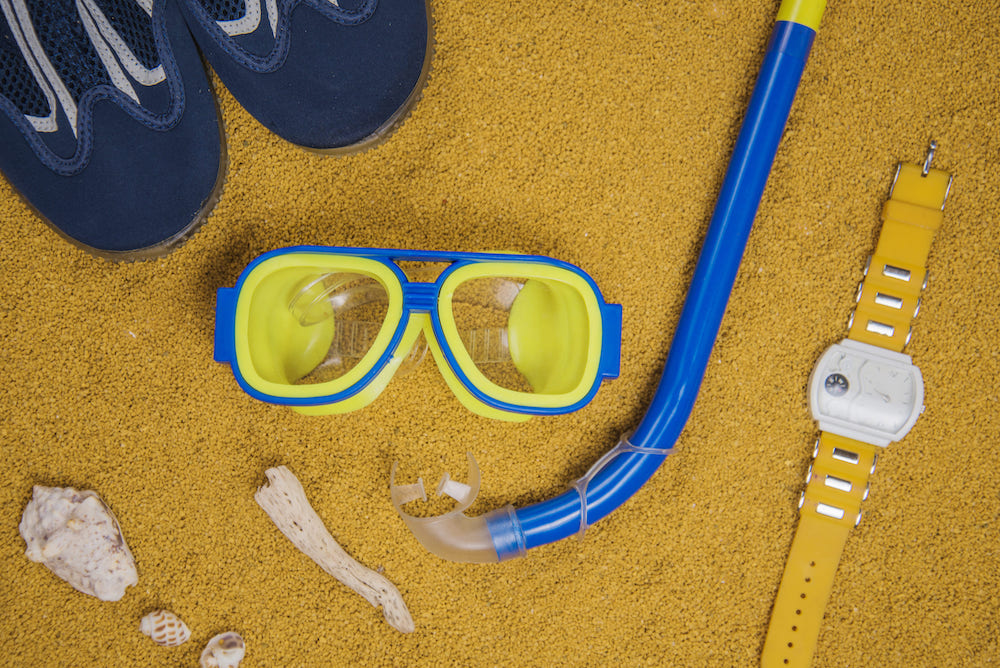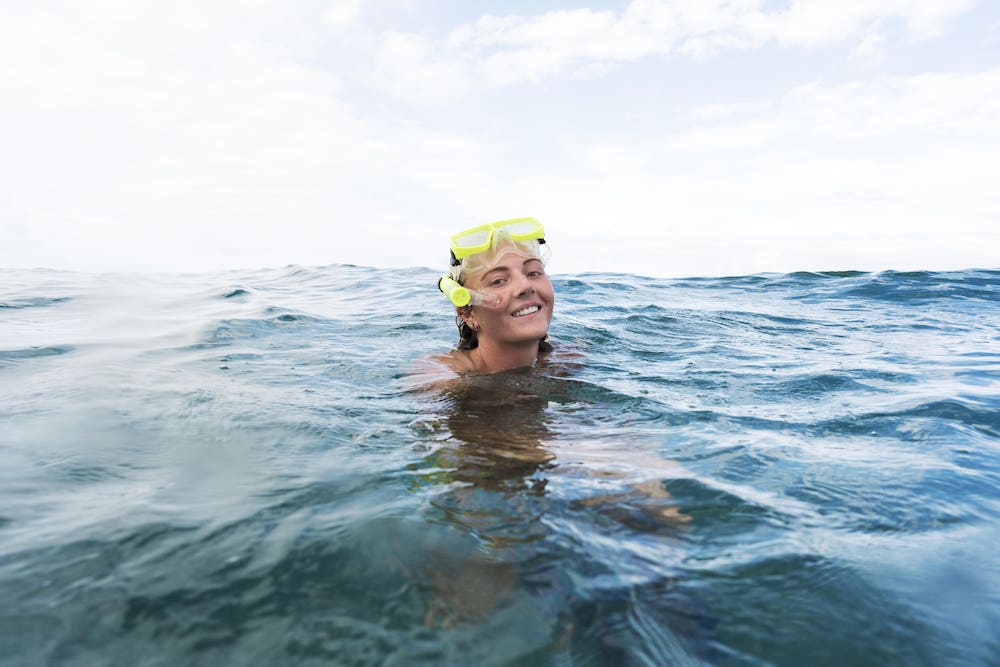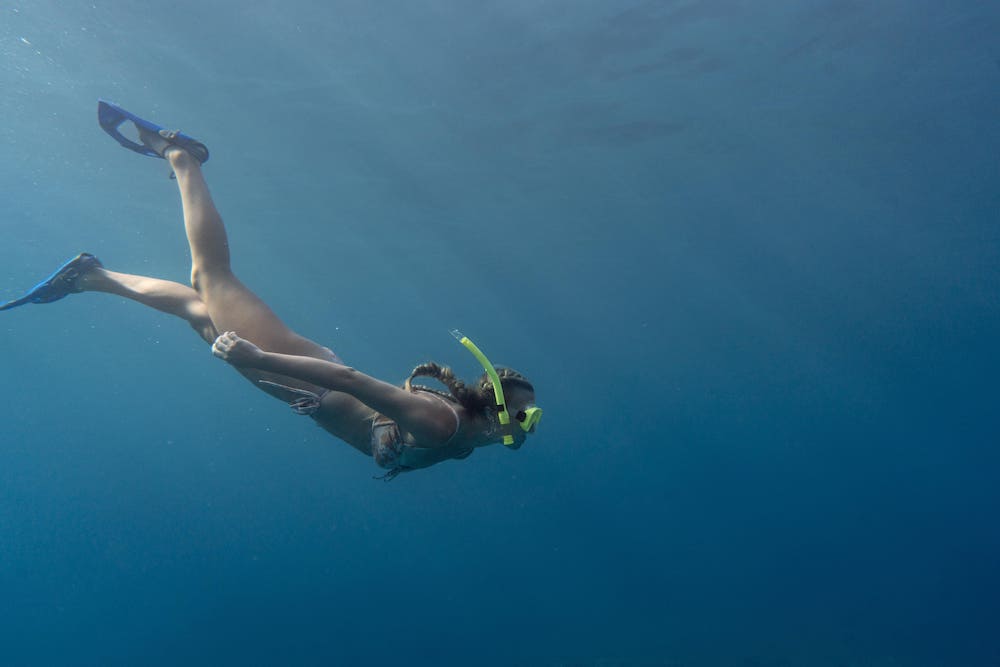WHAT EQUIPMENT DO YOU NEED TO SNORKEL? AN IN-DEPTH GUIDE

Did you know that millions of people around the world love to snorkel? According to industry standards, in the US alone, over 7.7 million participated in the activity in 2020 — an extra 3 million went and graduated from snorkeling into full-fledged scuba diving. That’s a whopping 9 million folks, in just one country, who looked at a body of water and decided to fin up and take a look at what it hid under the waves.
Snorkeling has a fascinating history too, dating back thousands of years when ancient civilizations first explored the underwater wonders. It was not only a means for them to provide for their families through deep ocean fishing but also a pastime. One of the earliest civilizations to don their suits – as flimsy as they were – were the ancient Greeks on the island of Crete. Those crafty Mediterraneans used reed straws to break underwater while collecting sponges and other marine resources. Today, this popular water activity continues to attract adventurers and nature enthusiasts alike, and unlike those pioneers, our tech has evolved from that bivouac equipment of 3000 BC. Let’s look at what equipment you’ll need for snorkeling and how to properly pick it.
Why Does the Right Snorkeling Equipment Matter?
When it comes to snorkeling, having the right equipment is essential for a memorable and safe experience. Like all activities, the better the toys, the better you’ll perform in it. And today, thanks to the industry’s fascination – the user demand – there are a lot of nifty equipment and tools to choose from. From high-end to bargain basement knick-knacks. Let’s break down some key reasons why investing in quality snorkeling gear is a must:
- Safety Considerations: You’re going into the void — and unless you’ve developed gills, down there humans were not meant to live. Properly fitted gear, such as a snug mask and snorkel, ensures that you can breathe comfortably and effortlessly. This reduces the risk of discomfort or panic underwater.
- Comfort and Ease: High-quality snorkeling equipment is designed for comfort and ease of use — allowing you to focus on the beauty of the underwater world without distractions. It’s innovative and self-explanatory. Right out of the box, you’ll know how to use it.
- Quality of the Snorkeling Experience: With the right gear, you’ll get a clearer view of the marine life and underwater landscape. The better the crystals, the better the view. This will greatly enhance your overall enjoyment of your underwater sojourn.

What Equipment is Needed for Snorkeling?
Now, let’s dive – and pardon the pun – into the essential snorkeling gear you’ll need. Let’s break it down and give you the skinny on what you can’t – and once more pardon the pun – live without and what’s optional:
Snorkel
This tube is what gives the whole endeavor its name. The word itself has a Dutch origin – from the etymological root “snurken” – At its core it means to snore or to snort. Early civilization had their own snorkels — in many cases hollow reeds, or bamboo tubes, or even animal horns. The one you’ll be purchasing is an offset of the SCUBA apparatus invented by French naval officer and explorer, Jacques-Yves Cousteau. This is basic snorkeling equipment.
- Dry, Semi-Dry, and Wet Snorkels: There are three main types of snorkels – dry snorkels, which prevent water from entering the tube; semi-dry snorkels, designed to minimize water entry; and wet snorkels, which allow water to enter but are easy to clear.
Tips for Choosing the Right Snorkel:
- Opt for a comfortable mouthpiece that fits securely and prevents jaw fatigue.
- Look for a purge valve at the bottom of the snorkel to clear out any water that enters.
- Choose a snorkel with a flexible and ergonomic shape for better maneuverability.
Mask
Your mask is your window to the underwater world. This is what will ultimately permit you to look out and spot all those Pixar fiends and Nemo companies — a proper, tight yet comfortable fit is crucial.
Fins
Fins come in various types, such as full foot and open heel, as well as long and short fins. These in many cases are optionals and not a must. Why? It depends on the body of water you’ll be traversing in. At their core fins allow you faster movements and ease in the water. But they don’t limit your adventure. The right fins will help you move effortlessly through the water and provide the proper amount of propulsion.
Tips for Choosing the Right Fins:
- Full-foot fins are great for warm-water snorkeling, while open-heel fins are versatile and suitable for a variety of conditions.
- Long fins are ideal for those who want maximum speed and power, while short fins are more compact and travel-friendly.
Additional Equipment for Snorkeling — Optional
Now, let’s take a look at all those optional bits of equipment out there that might entice you. And, more importantly, when it’s a must and when you can simply disregard them.
- Wetsuit or Rash Guard: If you plan to snorkel in cooler waters or want protection against the sun, a wetsuit or rash guard can enhance your comfort. In many cases, this is optional in warmer climates. It’s not the same, snorkeling off the coast of Oahu as in a lake in Alaska.
- Snorkeling Vest: A snorkeling vest provides buoyancy support. This can be a huge add-on, and highly, beneficial for less experienced swimmers or those who want extra oomph in the water.
- Waterproof Camera: Capture the breathtaking underwater scenes and the vibrant marine life with a waterproof camera. A good camera, one that can take a beating, might be an important part of your equipment. Today’s tech has everything from 5K picture quality to 360-degree filming abilities.
- Anti-Fog Solution: Keep your mask fog-free for an uninterrupted view of the underwater beauty. This fog solution is an offset of window cleaners — but it has been treated for this purpose.
- Mesh Bag for Gear Storage: A mesh bag is a perfect solution for storing and carrying your snorkeling gear, allowing it to dry and drain easily after your adventure.

Preparing for Your Snorkeling Tour – Tips
Before you embark on your snorkeling tour before you jump off your boat, and before you go gonzo for what’s hiding underneath the waves here are some helpful tips to ensure you’re well-prepared:
- Check with Your Tour Operator: Find out what snorkeling equipment is provided by your tour operator to avoid unnecessary packing. In most cases, if you’re going on a snorkeling tour, the operator will have everything you might need.
- Determine What Gear You Need to Bring: Based on the operator’s information, decide which gear you need to bring along. They’ll give you the basics — mask, snorkel, fins and vest. Everything else is up to you.
- Packing Your Snorkeling Equipment for Travel: Securely pack your snorkeling gear in a protective bag to avoid damage during travel.
Health and Fitness Considerations: Ensure you’re physically fit and comfortable in the water before taking on a snorkeling tour. Snorkeling is a taxing activity, make sure you can take the heat.
